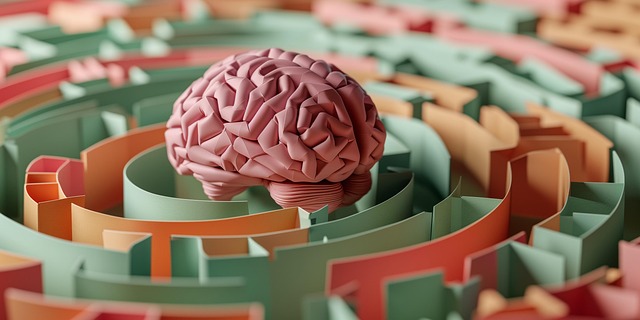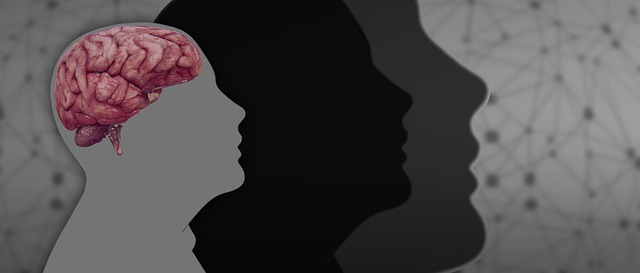Analyzing mental health data in young children with ADD-ADHD requires sensitive methods, including play therapy and storytelling, to capture emotional states accurately. A multidisciplinary approach involving psychologists, pediatricians, and behavior therapists interprets data from various settings to design tailored interventions. This strategy addresses core symptoms and co-occurring conditions, fostering open communication between parents, caregivers, and therapists for sustainable care. Effective therapy enhances mood management, informs public awareness, educates caregivers, and advocates for better support systems, ultimately tailoring interventions to individual needs through continuous evaluation.
Mental health data analysis plays a pivotal role in understanding and addressing challenges faced by young children, particularly those with Attention Deficit Disorder (ADD) or Attention Deficit Hyperactivity Disorder (ADHD). This article explores key aspects of mental health data collection specifically tailored to young children. We delve into analyzing symptoms and behaviors associated with ADD-ADHD, interpreting data to personalize therapy interventions, and measuring the effectiveness of these therapies in managing the disorder. By understanding these processes, we can enhance therapy for young children with ADD-ADHD.
- Understanding Mental Health Data Collection for Young Children
- Analyzing ADD-ADHD Symptoms and Behaviors
- Interpreting Data to Tailor Therapy Interventions
- Measuring the Effectiveness of Therapy in Managing ADD-ADHD
Understanding Mental Health Data Collection for Young Children

Understanding Mental Health Data Collection for Young Children begins with recognizing the unique challenges and needs of this demographic. Unlike adults, young children often lack the cognitive ability to articulate their feelings, making it crucial for data collection methods to be sensitive and engaging. Play therapy and creative tools like drawing or storytelling can serve as effective avenues to gather insights into a child’s emotional state. These techniques not only facilitate communication but also foster a positive thinking mindset, which is essential in early mental health interventions.
When assessing young children with potential ADD-ADHD symptoms, it’s important to consider the context within which they are developing. Data collection should include observations in various settings, such as home and school, to capture behavior patterns across different environments. This comprehensive approach ensures that any diagnosis is well-grounded and supports effective crisis intervention guidance. Additionally, by integrating depression prevention strategies early on, mental health professionals can proactively address emerging issues before they escalate.
Analyzing ADD-ADHD Symptoms and Behaviors

Analyzing ADD-ADHD symptoms and behaviors in young children is a specialized task that requires a nuanced approach. Therapy for young children with Attention Deficit Disorder (ADD) or Attention Deficit Hyperactivity Disorder (ADHD) often involves a multidisciplinary team, including psychologists, pediatricians, and behavior therapists. These professionals work together to interpret data gathered from various assessments, observations, and parental reports. By understanding the specific challenges faced by each child, tailored interventions can be designed to manage symptoms and improve quality of life.
Effective analysis goes beyond simply identifying hyperactivity or inattention. It involves assessing co-occurring conditions like anxiety or emotional regulatory difficulties, which are common in young children with ADD-ADHD. This comprehensive approach ensures that not only core symptoms but also associated challenges are addressed. Additionally, considering Burnout Prevention Strategies for Healthcare Providers is crucial when working with these populations to ensure sustainable and effective therapy delivery. Communication strategies that foster open dialogue between parents, caregivers, and therapists are essential in this process, promoting a collaborative environment that benefits the child’s overall well-being and progress.
Interpreting Data to Tailor Therapy Interventions

When analyzing mental health data, particularly for young children diagnosed with ADD-ADHD, interpreting the results is key to tailoring effective therapy interventions. This involves a nuanced understanding of each child’s unique challenges and strengths, as well as the impact of various therapeutic approaches. By delving into the data, professionals can identify patterns that reveal what works best for individual children. For instance, tracking improvements in mood management over time can guide therapists in refining their strategies.
This process not only enhances the quality of therapy but also contributes to the development of public awareness campaigns and confidence-boosting initiatives. By understanding what interventions are most effective, mental health professionals can advocate for better support systems and educate caregivers on how to foster healthy development in young minds.
Measuring the Effectiveness of Therapy in Managing ADD-ADHD

Measuring the effectiveness of therapy for young children with ADD-ADHD involves a multifaceted approach. By integrating robust mental health education programs designed to foster positive thinking and communication strategies, therapists can gain valuable insights into the progress and needs of their young clients. This includes assessing improvements in attention span, impulse control, and executive functioning skills that are central to managing ADD-ADHD symptoms.
Through regular evaluation and tracking, therapists can identify what works best for individual children, tailoring interventions accordingly. This data-driven approach enables them to adapt therapy methods, ensuring the strategies employed remain effective and engaging for young minds. Ultimately, continuous assessment facilitates better outcomes and enhances the overall quality of care provided to children with ADD-ADHD.
Mental health data analysis plays a pivotal role in understanding and treating conditions like ADD-ADHD in young children. By systematically collecting, analyzing, and interpreting behavioral and symptomatic data, professionals can tailor therapy interventions to meet each child’s unique needs. This tailored approach ensures that the effectiveness of therapy is maximized, leading to improved outcomes for young children struggling with ADD-ADHD and their families.














